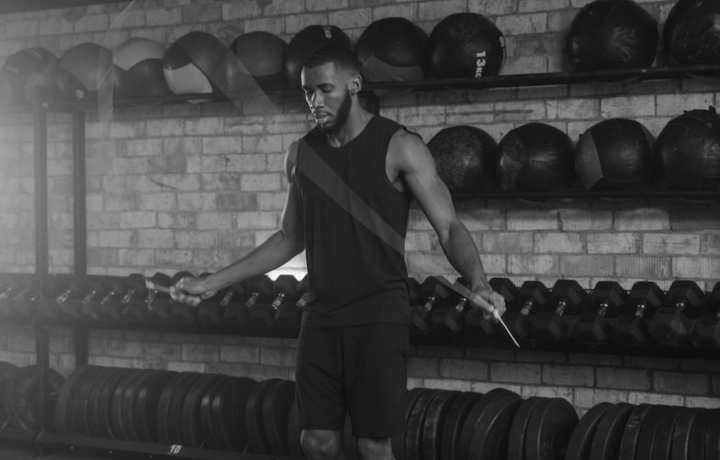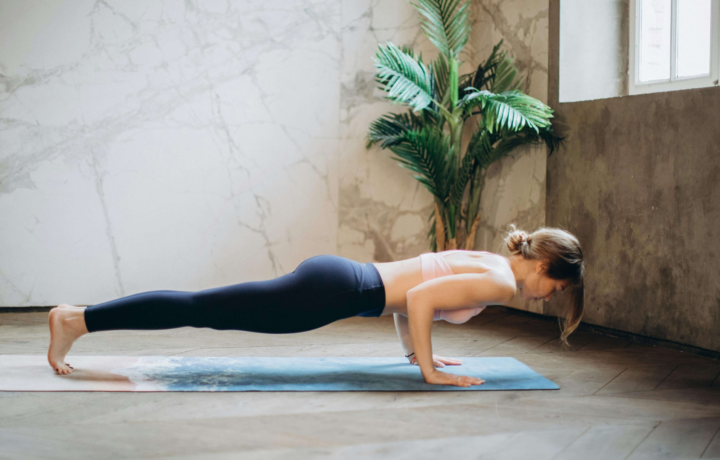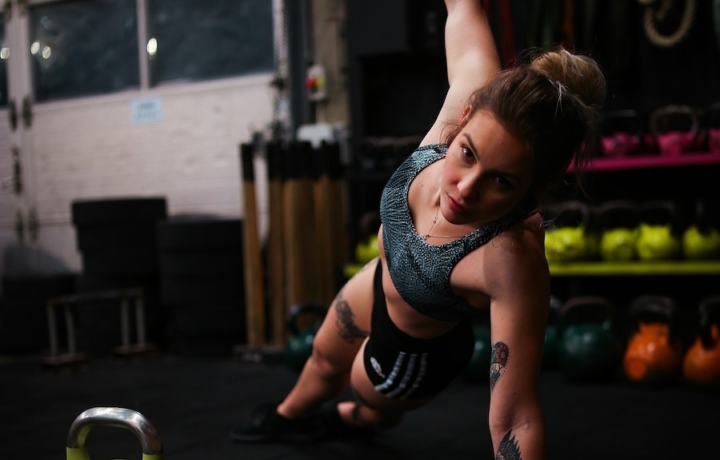Exercise
Mountain Climber

Mountain Climber
How to Perform
- Begin in a high plank position with your hands directly under your shoulders, arms straight, and body forming a straight line from head to heels.
- Engage your core by drawing your navel toward your spine and squeeze your glutes to maintain a neutral spine position.
- Bring your right knee toward your chest in a controlled motion while keeping your shoulders stable and hips level.
- Return your right foot to the starting position as you simultaneously drive your left knee toward your chest, maintaining a flat back throughout.
- Continue alternating legs in a running-like motion while keeping your weight evenly distributed between both hands and maintaining minimal hip movement.
- Breathe rhythmically throughout the exercise, exhaling as each knee comes forward and inhaling as it returns to the starting position.
- Keep your shoulders pulled down away from your ears and your wrists aligned directly under your shoulders to prevent excess strain.
- Maintain a consistent pace that allows you to keep proper form, focusing on control rather than speed.
Important information
- Keep your hips down and aligned with your shoulders—avoid letting them rise up toward the ceiling or sag toward the floor.
- If you experience wrist discomfort, try performing the exercise on your knuckles or with hands on an elevated surface like a bench.
- Start with slower, controlled movements before progressing to a faster pace to ensure proper muscle engagement.
- Modify by decreasing speed or taking smaller knee drives if you find it difficult to maintain proper plank position.

Mountain Climber
Exercise Details
Primary Muscles
Muscle Groups
Mechanic
Risk Areas
Built for progress
Take the guesswork out of training
Create personalized AI-powered workout plans that evolve with you. Train smarter, track every rep and keep moving forward, one workout at a time.






Mountain Climbers are a dynamic, full-body exercise that packs a serious punch in terms of fitness benefits. This intermediate-level movement simulates the action of climbing a mountain at a rapid pace, engaging multiple muscle groups simultaneously while elevating your heart rate.
When you perform Mountain Climbers, you're primarily targeting your abdominal muscles, which continuously contract to maintain stability throughout the movement. Your quads get an intense workout as they drive each knee forward, while your glutes activate to support the hip movement and maintain proper form. This comprehensive muscle engagement makes Mountain Climbers a staple in various training protocols.
You'll commonly find Mountain Climbers featured in HIIT (High-Intensity Interval Training) sessions, where they serve as an excellent spike in intensity. Crossfit athletes incorporate them regularly for their metabolic conditioning benefits, and they make for an effective warm-up exercise by quickly raising your core temperature and preparing multiple muscle groups for more intense work ahead.
The beauty of Mountain Climbers lies in their versatility as a training tool. They build muscular endurance, particularly in your core, which translates to better performance in everyday activities and other exercises. As a cardio component, they efficiently elevate your heart rate and improve cardiovascular capacity without requiring any equipment or much space. The constant engagement of your core throughout the exercise strengthens your abdominal muscles while improving stability and balance.
What makes Mountain Climbers particularly effective is their scalability – you can adjust the tempo to match your fitness level, making them appropriate for various workout intensities. The exercise challenges your coordination, strength, and cardiovascular system simultaneously, delivering impressive fitness benefits in a time-efficient manner. Whether you're looking to enhance your core strength, boost your cardio capacity, or simply add a challenging element to your routine, Mountain Climbers deliver results that match their intimidating name.
FAQ - Mountain Climber
Mountain Climbers primarily engage your core muscles (rectus abdominis and obliques), while also working your shoulders, chest, quads, hamstrings, and hip flexors. This full-body movement particularly challenges your abdominals as they stabilize your torso throughout the exercise.
Beginners can slow down the pace, perform fewer repetitions, or try the "step-back" variation by bringing one foot forward at a time instead of jumping. As you build strength, gradually increase speed and volume, or try advanced variations like Spider Climbers (bringing knee to same-side elbow).
The most common mistakes include sagging hips, raising your butt too high, not bringing knees far enough forward, and allowing your shoulders to collapse. Maintain a straight line from head to heels, keep your core tight, and position your hands directly under your shoulders throughout the movement.
You can safely incorporate Mountain Climbers 2-4 times weekly, either as part of your warm-up routine (2-3 sets of 20-30 seconds) or within HIIT circuits (30-60 second intervals). Allow 24-48 hours between high-intensity sessions that feature this exercise to ensure adequate recovery.
If you have knee issues, traditional Mountain Climbers may cause discomfort due to the repeated flexion and impact. Try modifications like slowing the tempo, reducing range of motion, or performing standing Mountain Climbers against a wall or elevated surface to decrease stress on the knees while still engaging the core.












